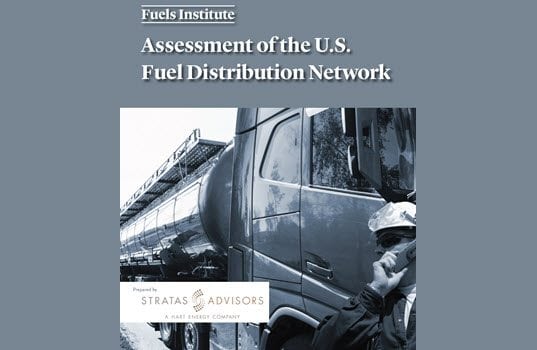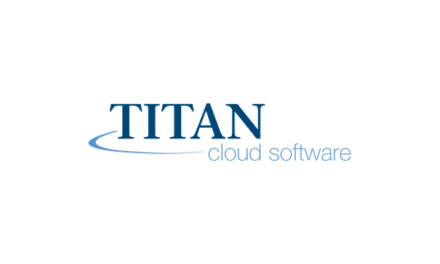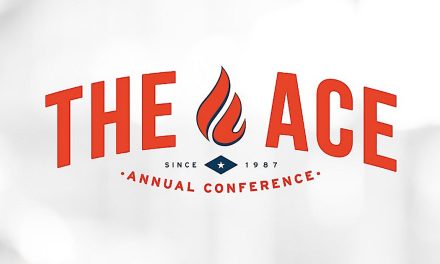By Keith Reid
Since its inception in 2013, the Fuels Institute has followed an aggressive research agenda. The topics have been varied and explored new ground, ranging from Shared Travel: Revolution or Evolution? to GHG Emissions from Light Duty Vehicles Powered by Natural Gas. This is in line with its charter as a think tank of fuels-related stakeholders, such as fuel retailers, fuel producers and refiners, alternative and renewable fuel producers, automobile manufacturers, environmental advocates, consumer organizations, academics, government entities and other stakeholders with expertise in the fuels and automotive industries.
However, the institute’s latest project, Assessment of the U.S. Fuel Distribution Network, prepared by Stratas Advisors, takes a different track by providing an easily accessible and easily manageable overview of the fuel distribution infrastructure throughout the United States, from the refinery to the retailer. As stated in the executive brief, “This report evaluates the U.S. supply chain, how it works and what limitations/weaknesses exist at each point to accommodate diverse fuel specifications and achieving higher rates of biofuels penetration.”
The report provides a breakdown of supply issues by the Petroleum Administration for Defense District (PADD), as well as a breakdown of the distribution infrastructure from the refinery to the terminal to the retail nozzle and how conventional and biofuels fit into that infrastructure.
Assessment of the U.S. Fuel Distribution Network is a document that should be on hand for professionals in all levels of the motor fuels industry. For the novice, it will help them get up to speed in a rapid manner with a general understanding as to how fuel goes to market. And the experienced industry professional might very well get some new insight from the specifics noted, and further appreciate having the information at hand for reference as needed in an accessible format. And, it’s free and easily downloaded in PDF format after providing a few registration details.
This report should also be useful for audiences outside the industry (which was a core consideration in its development), such as regulators, legislators and automobile engine manufacturers that have significant influence over the industry. Although the Trump administration likely represents a sea of change in how aggressively carbon-related environmental policy will be pushed from Washington, there is no guarantee that existing policies will be rolled back. If initiatives are undertaken to meet stringent regulatory requirements, they should be as flexible, non-disruptive, affordable and efficient as possible.
“There is a lack of awareness from non-fuel specific stakeholders as to how the market works,” said John Eichberger, Fuels Institute Executive Director. “If you start talking about the different [fuel options being discussed for the future]—you start looking at the octane issue, you start looking at biofuel issues—we really thought it was important that everybody had a basic understanding of the complexity of the market. If you have that basic understanding, the hope is, as you evaluate options, you have a better understanding of the consequences and additional challenges that might develop.”
The complexity is well illustrated in the full report. As highlighted in the executive brief:
- With more than 12 million barrels of transportation fuel consumed every day, the United States lays claim to one of the largest and most complex fuel supply chains in the world.
- During the past decade, the U.S. transportation fuel market has shifted dramatically. The U.S. has gone from being one of the world’s largest importers of petroleum products to a net exporter of transportation fuels.
- With the exception of the West Coast (PADD 5), each PADD has an imbalance of supply and demand that is resolved through logistical connections that are used to make up those imbalances. In many cases, the imbalance is resolved not just by inter-PADD movements, but also through foreign imports and exports.
- One of the key limiters of the U.S. transportation fuel value chain flexibility is the varying specifications and mandates that exist across the country, known as boutique fuels. Within each specified market, it is impermissible to sell a fuel that does not meet the region’s specification.
The report notes that California faces a variety of specific challenges based upon its environmental policies. Regardless of what happens in coming years at the federal level, California will most certainly be as aggressive in its carbon remediation policies as ever, and that’s in partnership with a handful of western and northeastern states. From a market standpoint, it can be easier for industry to voluntarily go along with California even if that is not required federally. One issue, for example, is the future of diesel in California.
“A lot of fuel providers are talking, saying that, really, the only viable diesel in California is going to be renewable diesel,” said Eichberger. “If that’s the case, then you start looking at what the federal government’s role is going to be in either encouraging, discouraging or getting out of the way of renewable diesel development. That could affect the California market directly. I really think when it comes down to it, if this is read by the right people, hopefully it will inspire more of a pragmatic approach to market policy development than you might have seen in the past.”
Download full report at fuelsinstitute.org/infrastructure.









